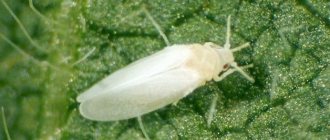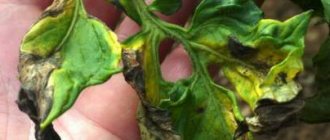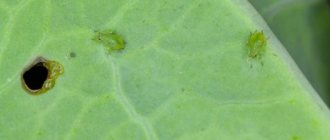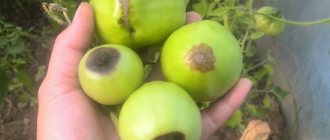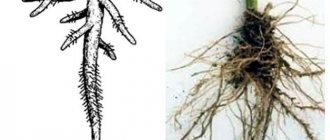A butterfly that lays worms on tomatoes - tomato cutworm: description, photo
There are many varieties of cutworms. Basically, they all differ in brown, gray or black color. The main activity occurs at night and evening hours. At this time, they eat leaves and damage all garden crops. It is worth noting that cutworms attack not only tomatoes, but also cabbage, cucumbers, beans and carrots. Cutworm caterpillars, which mainly live in the ground and eat the roots of plants, cause great harm. They also sometimes eat ground leaves that are very close to the ground.
Armyworm caterpillar
It is worth noting that the cutworm overwinters below ground and butterflies appear in the first half of May. They fly until the third ten days of July. The butterfly is very active. At night after an active summer, females lay eggs on weeds. It is worth noting that the female is very fertile. Therefore, if you do not control pests, you can lose your entire vegetable crop.
Owl butterfly
The garden armyworm is most common in Ukraine and the southern regions of Russia. There are two ways out, that is, two summers of butterflies. The first one falls in the month of May. The second year falls in August. Accordingly, almost all crops are susceptible to damage. Small, that is, the youngest caterpillars eat only the lower part of the leaves, giving them a skeletal appearance. Older caterpillars eat all the leaves completely, without even leaving veins, and also damage the fruits and form large, irregularly shaped hollows in them.
Owl butterfly
How to treat and spray tomatoes against green caterpillars that eat them: preparations
You need to fight the cutworm not only after you see eggs or pupae or damaged leaves, but immediately after discovering the clutch. In addition, the most effective is prevention, which will prevent the emergence of new insects and their spread. To combat the armyworm, both folk remedies and chemicals are used. Biological substances that are active against younger caterpillars are very effective.
List of drugs:
- Agravertine
- Decis
- Zeta
- Arrivo
- Inta-Vir
- Sherpa
Basically, all these substances are dissolved in water, after which the seedlings and bushes are sprayed. You can water in the root area. For more details, please see the instructions for the specific drug.
Armyworm caterpillar
How to treat and spray tomatoes against green caterpillars that eat them: folk remedies
The cutworm on tomatoes can be destroyed not only with the use of pesticides and insecticides. Traditional methods will also work. The best is to use herbs. Sometimes experienced summer residents plant calendula and mint near the tomato plantings. These plants repel cutworms because the insects do not tolerate proximity to these strong-smelling plants.
Recipes of traditional methods:
- Garlic arrows. To prepare the poison, you need to finely chop 700 grams of garlic arrows and pour them into a bottle. Next, all this is filled with ordinary water, closed with a lid and placed in a cool place for 7 days. After this, 50-70 g of solution is taken from the resulting solution. Dissolve in a bucket of water. The resulting solution is used to spray tomato crops. Spraying must be done once every 10 days.
- Another great method for controlling cutworms on tomatoes is to use wormwood. To prepare the poison, 500 g of herb is poured with five liters of boiling water and left for two days in a dark place. After this, filter the solution and dilute it in a ratio of 1 to 10. The resulting liquid is sprayed on the tomatoes. This method is effective both in relation to adult individuals and in relation to young caterpillars.
- You can fight the cutworm using burdock leaves. To do this, you need to cut half a bucket of leaves and fill them with warm water. After this, leave the bucket covered with a lid somewhere warm for three days. Spray the bushes with the resulting solution. Treatment is carried out in mid-May, every 14 days.
Spraying tomatoes
Caterpillars on tomatoes and external manifestations of infection
The appearance of an unsightly butterfly , similar to a large moth, on tomato bushes at the beginning of summer should immediately alert you. During this period, they are not dangerous, feed only on nectar and lay eggs. It is the caterpillar that causes damage to the plant.
The fertility of the moth is high . During the season, an adult lays from 500 to 1000 eggs. In warm weather, eggs mature in 5 days, in cool weather - in 10.
The caterpillar development period is 20 days . All this time she gnaws the stems, leaves and fruits of tomatoes. Then the caterpillar goes into the ground, turns into a pupa and overwinters in the ground until the next season.
The caradrina or tomato cutworm at the butterfly stage has a wingspan of up to 3.5 cm. The front pair of wings is gray-brown in color, the back pair is pink-tinged. Ornament with strokes, zigzags and stripes.
Appearance of caterpillars:
- large body – 25-30 cm in length;
- color - from green to brown;
- on the back there are thin longitudinal stripes with edges;
- on the sides there are dark wide stripes, and under them there are thinner, yellow stripes;
- the abdomen is light with white spots.
Pest activity begins at night : the caterpillars gnaw holes in greenery and fruits, and in the morning they hide underground to a depth of 5 cm.
It can be useful:
Why do yellow spots appear on tomato leaves?
The reason for the appearance of purple spots on tomato leaves
Salt to protect against caterpillars on tomatoes: recipe for use
Salt can also be used to remove cutworms from tomatoes.
Instructions:
- To do this, you need to dissolve 400 g of salt in 5 liters of water.
- This strong saline solution must be sprayed on the leaves. Try to work on the reverse side as well.
- You can also treat leaves that are as close to the ground as possible. This will help eliminate caterpillar attacks on leaves.
The saline solution turns out to be quite liquid, so in order for the liquid to stick well to the leaves, you can add 50 g of grated laundry soap to the resulting solution. It is crushed, added to water and stirred until the soap flakes dissolve. Mix with saline solution.
Salt from a scoop
Basic methods of struggle
Used to control tomato cutworm:
- manual collection of caterpillars;
- spraying with chemicals;
- treatment with folk remedies;
- biological method.
Chemicals
How to deal with green caterpillars on tomatoes in a greenhouse? Chemical treatment is the most effective method of pest control. Spraying is carried out taking into account the fact that pesticides are removed from the fruit within 20-30 days. Therefore, before using chemicals, calculate the expected start date of harvest.
Attention! Gloves are used to protect the skin, and respirators are used to protect the respiratory system.
List of effective means:
- "Inta-Vir" is a contact-intestinal insecticide. The substance cypermethrin destroys butterflies and caterpillars. The protective effect lasts up to 15 days. Dissolve 1 tablet in 10 liters of water and use it during the tomato growing season.
- "Decis Profi" is a fast-acting contact-intestinal insecticide. Belongs to the class of pesticides moderately hazardous to humans. Contains the substance deltamethrin. To treat 100 m², 0.5 g of the substance is dissolved in 5 liters of water. The product is used before flowering. The protection period is 10-15 days.
- "Avant" is an insecticide of moderate hazard class for humans. Contains the substance indoxacarb. Resistant to rain, effectively destroys eggs and caterpillars. The consumption rate per 1 ha is 200-300 ml. The product is used no more than twice during the growing season.
- "Arrivo" is a contact-intestinal insecticide. Shows high effectiveness against cutworm caterpillars at low application rates. Consumption per 1 ha – 240-320 ml. Treatment is one-time, during the growing season.
- "Aktara" is a systemic insecticide with contact-intestinal action. The active ingredient is thiamethoxam. Destroys the caterpillar at the feeding stage. 4 g of powder for irrigation or 1.2 g for spraying are dissolved in 10 liters of water.
- "Tanrek" is a systemic insecticide with contact-intestinal action. The active ingredient is imidacloprid. The protection period is 30 days. The drug can be combined with Fitosporin. The product is used for spraying (5 ml per 10 liters of water).
- "Fitoverm" is an enteric contact insectoacaricide. Irrigation is carried out twice during the entire growing season. 1 ml of the drug is dissolved in 10 liters of water. The protection period in the greenhouse is up to 20 days, in the garden – up to 15 days.
Important! It is recommended to alternate chemicals used to kill cutworm caterpillars from season to season. The pest is highly resistant to such agents. What worked this year will not work next year.
TOMATO MOTH and COTTON BULLSHIT ON TOMATOES IN GREENHOUSES (03-08-2018)
Folk remedies
Folk remedies are effective in detecting the first pests . Unfortunately, in case of mass destruction, they do not bring results.
Recipes for folk remedies:
- Pour a bunch of chopped garlic arrows or a head of garlic into 1 liter of hot water and leave for 3-4 days. Bring the product to a volume of 10 liters and use it to treat bushes twice a month.
- Pour 300 g of tobacco dust into 10 liters of boiling water and leave for 24 hours. Apply to spray tomatoes every two weeks.
- Fill a galvanized barrel with chopped bird cherry herbs and fill it to the top with boiling water. Leave for a day, use for spraying bushes and watering the soil.
- Pour a kilogram of fresh wormwood into 3 liters of water and boil for half an hour, then increase the volume to 10 liters and irrigate the bushes twice with an interval of two weeks.
- Fill a 10-liter bucket with burdock, chamomile, datura, yarrow, celandine, potato tops (optional) and fill with water. Leave for four days and use to irrigate bushes once every two weeks.
Mix shavings of laundry or tar soap into each solution. For a 10 liter bucket – 30-50 g.
A saline solution is effective against cutworms . Dissolve 2 tbsp in 10 liters of water. l. rock salt and water the bushes generously.
What plants repel cutworms on tomatoes?
Cutworms are insects that are repelled by strong-smelling plants. Therefore, if you saw a lot of similar insects in your garden last season, you can take care of planting plants with a strong odor.
List of plants:
- Chernobryvtsy
- Bird cherry
- Thyme
- Mint
- Sagebrush
- Calendula
- Cornflowers
Please note that it is necessary to plant these plants in certain flowerbeds and groups. It is best to surround beds with tomatoes with similar plants. They will interrupt the smell of tomatoes, which is what cutworms usually focus on. This option is ideal if cutworm butterflies have appeared. But it is practically useless if there are many young larvae that eat the roots. In this case, it is better to use insecticides. There are also ways that can significantly reduce the number of armyworms next year. Therefore, it is worth paying more attention to prevention.
Armyworm repellent plants
Several methods of prevention:
- Dig up the plants in the fall to a depth of 25 cm. Remove all weeds and burn them, as well as torn out tomato tops. All remaining bushes must be burned.
- Be sure to clean up weeds. After you dig up all the tomato bushes after fruiting, you need to burn the tops and dig up the garden to a depth of 25 cm.
- The same manipulation must be done in autumn and spring, during the growth of tomato bushes. It is necessary to constantly clean the garden of weeds. The fact is that cutworms can lay eggs on weeds, so it is necessary to have as few of them as possible.
- Also pay attention to the neighborhood. The best option would be to plant plants nearby that smell very strongly. They will shoot down the scoop.
- If you see that there are holes in the plants, and the tomato fruits are damaged, then in this case it is necessary to use insecticides. All traditional methods will be ineffective, since they fight rather slowly. Adults or large caterpillars are not destroyed in this way. A stronger and more serious impact is needed.
Cutworm Butterfly
As you can see, there are a lot of options for dealing with cutworms. The main thing is not to neglect your garden and devote a lot of time and attention to prevention. The most basic way to prevent cutworm infestation of your tomatoes is to dig deep. After all, cutworm larvae overwinter inside the soil, and if you dig deep into the soil in the fall, almost all of the larvae will freeze out over the winter.
What caterpillars eat tomatoes in a greenhouse?
In a greenhouse, tomatoes are parasitized by two types of caterpillars: cutworms and whiteflies. They differ in appearance, and the damage they cause to plants is also different.
Scoops
These caterpillars affect not only tomatoes, but also other vegetable crops. They live mainly in open ground, but can also penetrate into the greenhouse. Cutworms cause significant damage to tomato beds. If these pests are not controlled, they will multiply, spreading throughout the garden and affecting other crops grown. Even winter is not a hindrance to them, since the parasites overwinter in the ground.
As they develop, noctuids go through three stages:
- larvae;
- caterpillars;
- pupae;
- butterflies.
At each stage they are dangerous to plants, and control methods will differ depending on the stage of development.
Important! The greatest damage to tomatoes is caused by cutworms at the caterpillar stage, when they eat the fruits. The tomatoes in which they have settled are unsuitable for food.
The appearance of the scoop is as follows:
- The eggs of these insects are small, up to 0.5 mm. Their lower part is flat, and their upper part is slightly elongated. Cutworms lay eggs on the undersides of leaves, making the clutch difficult to detect. Fertility is high: only one butterfly can lay up to 500 eggs during the season. During the summer, at least two generations usually change. The third generation goes into the soil for the winter. Eggs ripen very quickly - it takes from 2 to 10 days, and in warm weather the process occurs faster.
- Caterpillars come in different colors, usually the color is not too bright: green, gray, yellow, and brown are found. The body of the caterpillars is naked, with sparse bristles. Three light stripes run along the body. It is at the second stage of development that cutworms cause the greatest harm to tomatoes. They actively feed on the leaves and stems of plants, move on to flowers, and then take on juicy fruits, gnawing holes in them and settling inside. Noctuid caterpillars live for about 20 days, after which they move to the next stage.
- The cutworm pupa does not harm plants. The insect is inactive at this stage of development. It is sealed for subsequent transformation into a closed pupa. The color is usually dark brown. The butterfly usually goes through the pupal stage in the upper layer of soil, going deeper to 10-15 cm.
- The adult butterfly is moth-like with a faded brown-gray coloration; there are patterns on the wings, the wingspan reaches 2.5-4.5 cm. Adults do not harm crops, since their main food is nectar. However, they lay eggs en masse, giving birth to new generations. An adult moth butterfly can live from 20 to 40 days, constantly laying eggs.
Cutworms are nocturnal insects. During the day they hide in the top layer of soil, and at nightfall they come out and attack plants.
Whiteflies
These are very tiny white moths that resemble midges. Their size does not exceed 3 mm (and sometimes in the range of 1.2-1.8 mm). The insect's abdomen is yellowish in color, and its small wings are covered with whitish pollen. Adults live on both the outer and inner sides of leaves. They are easy to detect if you shake the plant. Disturbed, they fly up in a thick white swarm.
Whiteflies are most dangerous at the larval stage. They are inactive, completely crumbled in size, and are located on the leaves of plants on the underside. Pale in color, inconspicuous, half transparent. At first, the larvae are able to move, which is why they are also called “vagrants.” They migrate between stems and leaves, choosing the most juicy and nutritious place.
Important! In addition to absorbing plant juices and attracting sooty fungi, whiteflies are also dangerous because they cause epidemics of bacterial infections, which they carry.
By the time they transform into a butterfly, the larvae are attached to a permanent place and are covered with a coating similar to wax. At this time, these pests are no longer afraid of any insecticides or pesticides. Whitefly larvae are similar to aphids - they also suck the juices from the plant. However, the danger of whiteflies is not only that they deprive plants of vitality. During the feeding process, these parasites produce a specific liquid - sticky, sugary, sweet. The secretion covers the leaves and attracts sooty fungi and ants, which are very fond of such substrates.
Fungi, once on the nutritious soil left by whiteflies, multiply and grow. In their habitats, a black coating forms on the leaves, which prevents sunlight from reaching the leaves. This becomes an obstacle to the photosynthesis process.
As you know, photosynthesis is the basis of plant life. When this opportunity is limited, garden crops, already weakened by the loss of juices due to the larvae, gradually die: the leaves turn yellow and fall off, the processes of growth and development stop, and the harvest becomes very meager. Gradually, the black coating spreads to the fruits, covering them on the outside, and inside they become white and become inedible.
Whiteflies prefer to live in closed, warm and humid environments. The greenhouse is ideal for them. Open ground is avoided, since cold temperatures, winds and predators that feed on them are dangerous for them there. But they can’t stand the cold. If the temperature drops below +10°C, the whiteflies die. But butterflies tolerate frost well and overwinter quietly in the top layer of soil.
Find out more about how to get rid of cutworms and whiteflies on tomatoes using chemical and folk remedies.
